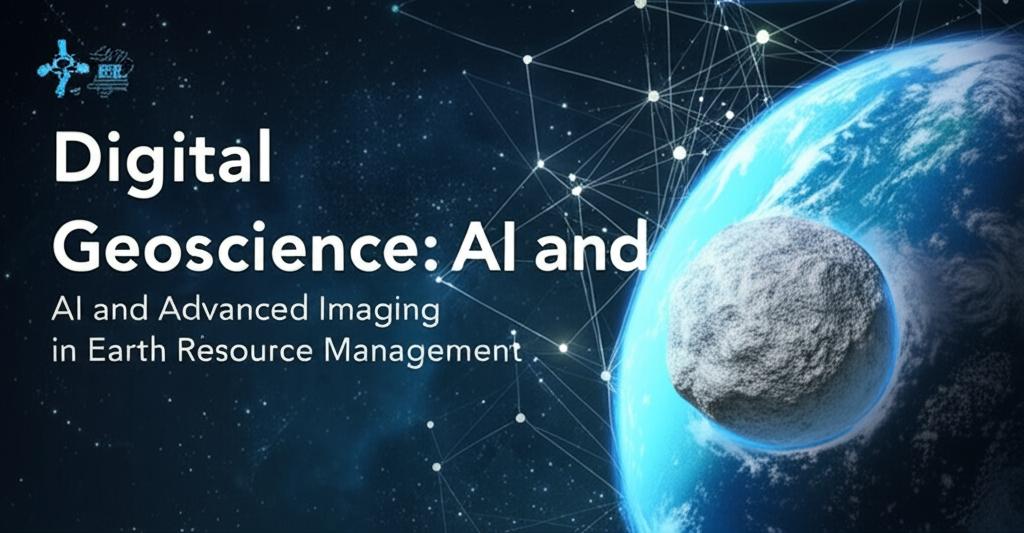The realm of Earth science is undergoing a significant transformation, driven by the convergence of Artificial Intelligence (AI) and sophisticated advanced imaging techniques. This synergy, often termed Digital Geoscience, is revolutionizing how we explore, monitor, and manage our planet's valuable resources. From unearthing mineral deposits with greater precision to ensuring the sustainable extraction of resources and monitoring environmental changes, these cutting-edge technologies offer unprecedented capabilities.
At the forefront of this revolution is AI, particularly machine learning (ML) and deep learning (DL) algorithms. These tools are adept at analyzing vast and complex geological datasets, including satellite imagery, geophysical surveys, and drilling data, to identify patterns and anomalies that would be imperceptible to human observers. For instance, AI can significantly accelerate mineral exploration by predicting potential deposit locations, thereby reducing the need for extensive and costly fieldwork. Machine learning models can integrate diverse datasets – encompassing geological, geophysical, and geochemical information – to create detailed prospectivity maps, pinpointing areas with a high likelihood of valuable mineral occurrences. This targeted approach not only enhances discovery rates but also minimizes the environmental footprint associated with exploration activities.
Advanced imaging technologies, including hyperspectral and multispectral imaging from satellites and drones (UAVs), LiDAR scanning, and various geophysical imaging methods, provide the rich data that fuels these AI models. Hyperspectral imaging, for example, captures data across a wide spectrum of light, allowing for the identification of specific mineral signatures from afar. LiDAR provides highly accurate 3D models of the Earth's surface and subsurface structures. When these detailed images are processed using AI, geoscientists can gain a much clearer understanding of geological formations, resource distribution, and potential geohazards.
The applications of digital geoscience extend across various earth resource management sectors:
- Mineral Exploration: AI algorithms analyze geological, geophysical, and remote sensing data to identify new mineral prospects with greater accuracy and efficiency. This includes alteration mineral mapping and the creation of 3D models of ore bodies.
- Oil and Gas: AI is being used to improve reservoir characterization, optimize drilling operations, and enhance production. Techniques like Full Waveform Inversion (FWI), supported by AI, are delivering higher-resolution seismic insights.
- Water Resource Management: AI-driven analysis of satellite imagery and hydrological data aids in monitoring groundwater levels, predicting floods, and assessing water quality. This is crucial for sustainable water use and managing the impacts of climate change.
- Environmental Monitoring and Management: Advanced imaging and AI are vital for tracking land-use changes, deforestation, soil erosion, and the impact of mining activities. This enables more effective environmental protection and reclamation efforts.
- Geohazard Assessment: AI can analyze real-time seismic data and ground motion in conjunction with historical trends to predict risks like earthquakes and landslides more accurately.
- Sustainable Development: By optimizing resource extraction, minimizing environmental disruption, and improving an understanding of earth systems, digital geoscience contributes directly to sustainable development goals.
Furthermore, the development of "digital twins" – virtual replicas of physical assets or geological systems – is an emerging trend. These digital twins, powered by real-time data from sensors and advanced imaging, and analyzed by AI, allow for scenario modeling, predictive maintenance of infrastructure, and optimized resource extraction strategies.
The integration of cloud computing platforms is also playing a crucial role, providing the necessary computational power and storage for the massive datasets generated and processed in digital geoscience. This facilitates collaboration and makes these advanced tools more accessible.
Looking ahead, the continued evolution of AI, including large language models (LLMs) for interacting with geological data and the potential advent of quantum computing, promises even greater transformations in earth resource management. The ongoing development aims to make AI models more interpretable and to integrate domain-specific knowledge more effectively, leading to more robust and reliable decision-making. As these technologies mature, they will undoubtedly play an increasingly critical role in addressing global challenges related to resource scarcity, environmental protection, and climate change.

